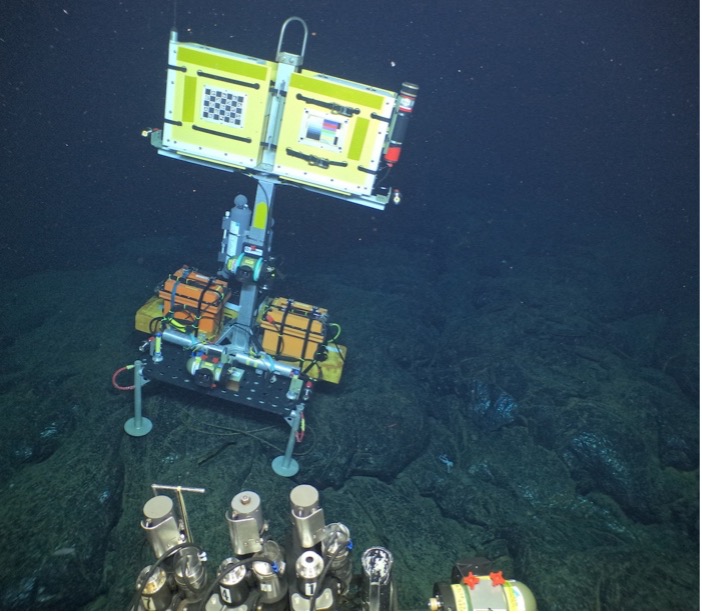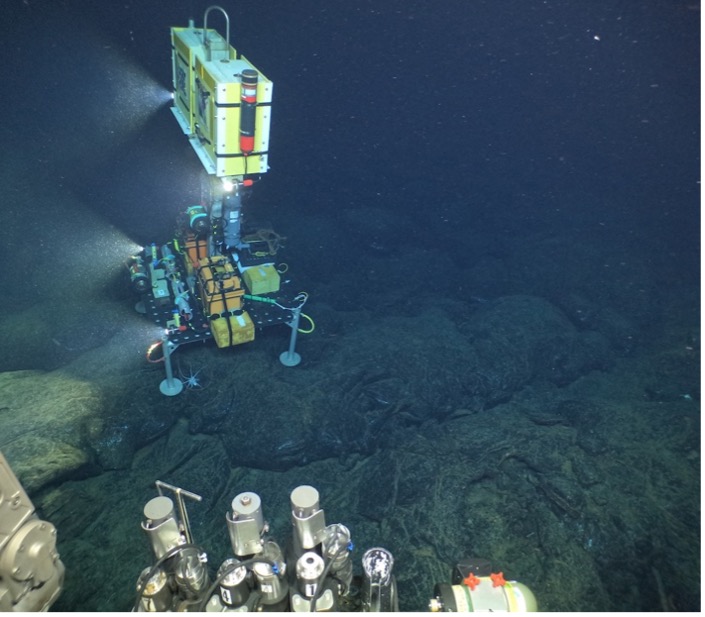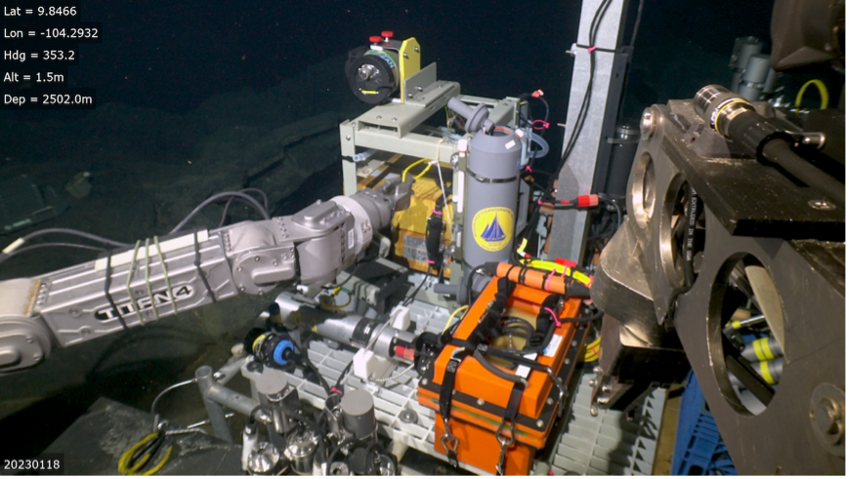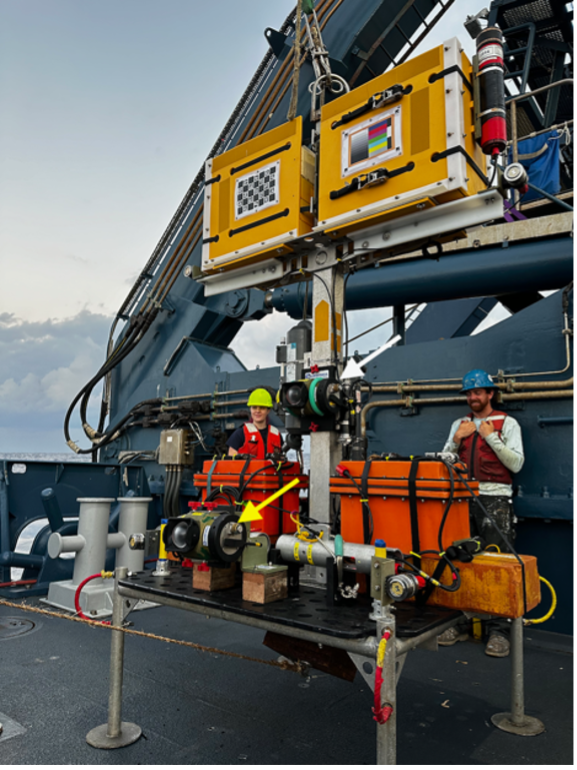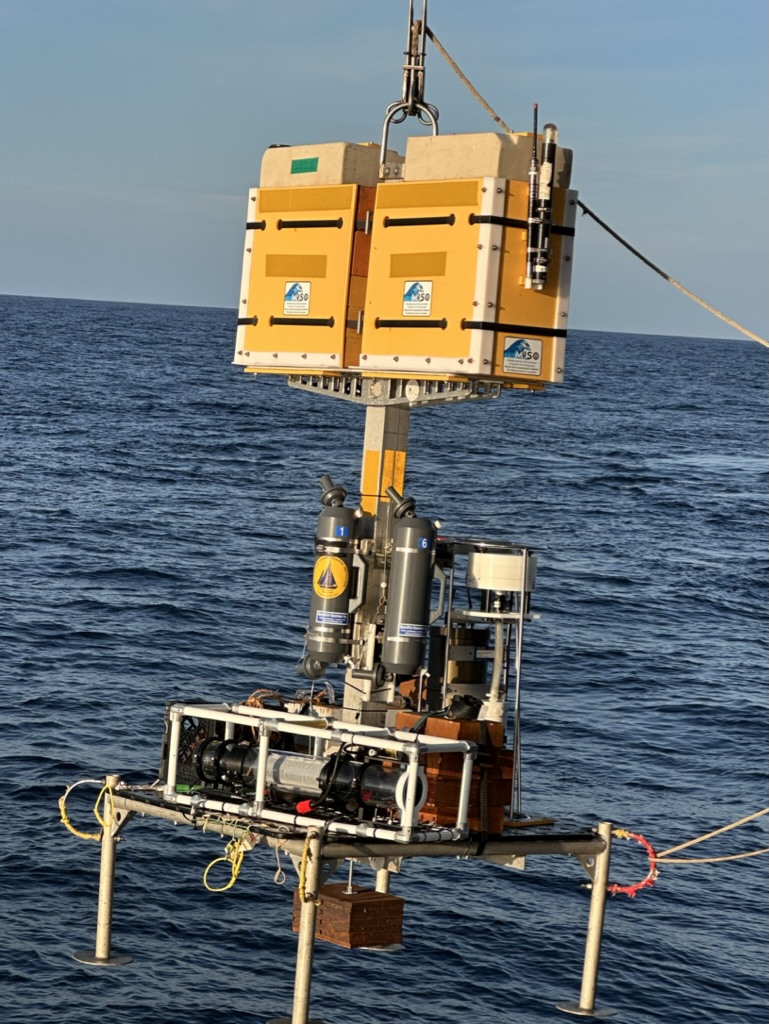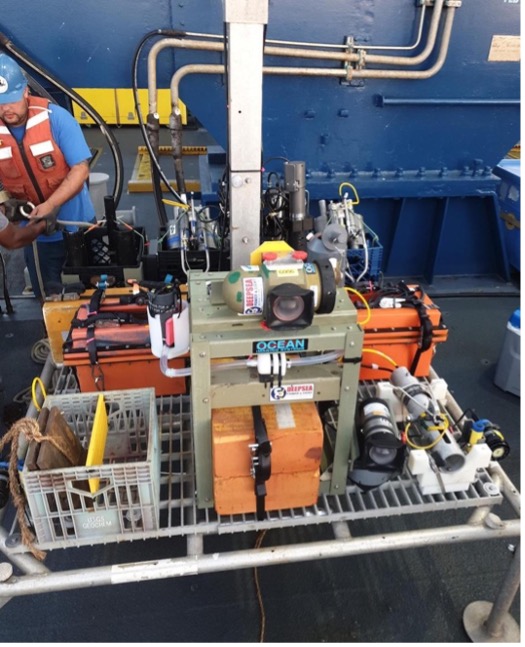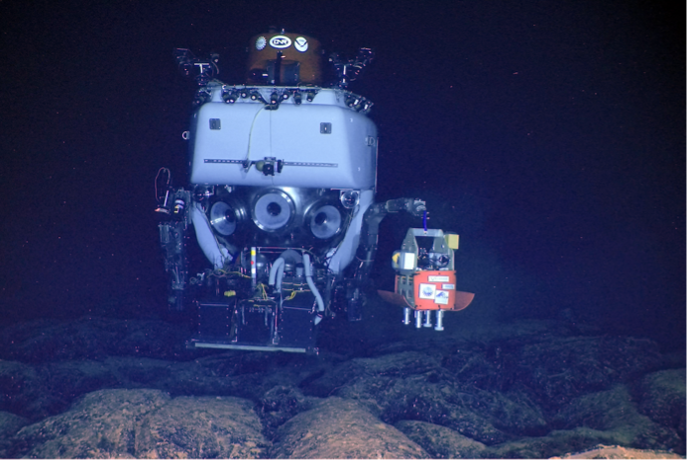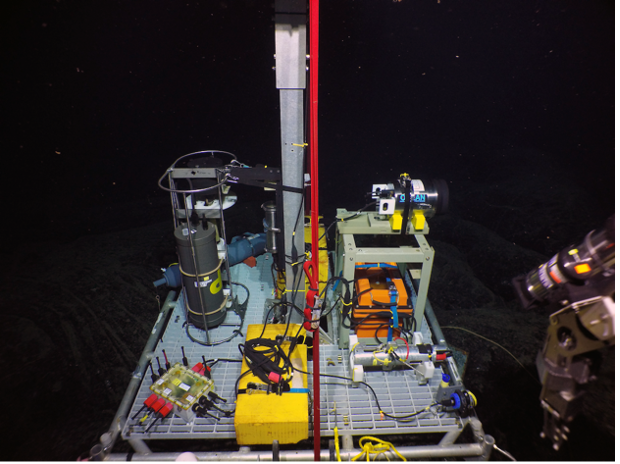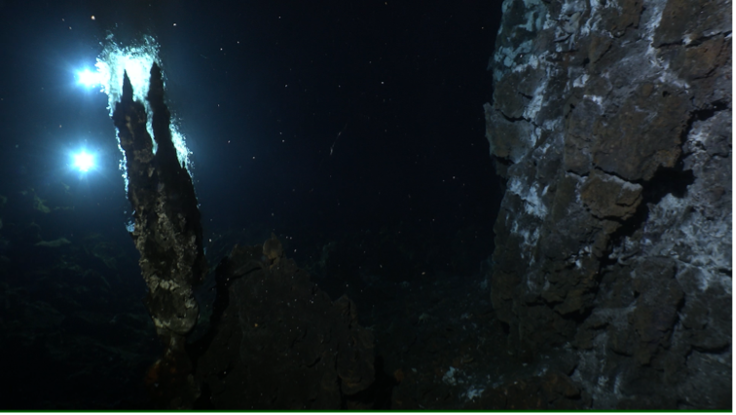MISO Seafloor Lander for Imaging and Sampling
Seafloor landers (also called 'elevators') are commonly used in conjunction with deep-sea submersible operations that involve human occupied vehicles (HOVs) and remotely operated vehicles (ROVs). Landers are used to deliver instruments, samplers and sensors down to the seafloor and to carry samples and data back to the surface, without having to recover the vehicle. This mode of operation can be very effective in sampling operations where sample sizes or weight exceed the HOV or ROV's basket payload, or in the case of ROV operations, allows the vehicle to stay on the seafloor working for extended periods (often multiple days) while recovered samples are delivered to the ship for processing onboard. Landers are also used to deploy pumps with specialized filter assemblies and timers for collecting deep-sea larvae. Imaging from seafloor landers also provides stunning contextual views of seafloor terrains and deep submergence vehicle movement and sampling operations.
The MISO Facility has fabricated and configured numerous seafloor landers for research expeditions over the past 20 years. MISO DeepSea™ (DSPL) Seabatteries™, cameras, strobes, LED light arrays and reed switches (used to turn on and off power to lights and camera/strobe systems by a submersible's manipulator) have been designed to work in various configurations depending on the field objectives. The lander can also be configured to remain on the seafloor as a time-lapse system for both short (days to weeks) and long (1-12 months) deployments.
Inquiries regarding configuration of existing landers or fabrication of a deep-sea lander for specialized experiments should be directed to: miso@whoi.edu and dfornari@whoi.edu.
MISO-NDSF lander in use on the East Pacific Rise near 9° 50'N at ~2500 m depth. The lander is configured with 4 DSPL SeaLites™ providing distributed lighting for additional illumination for high-resolution video and still imaging of seafloor structures. The red cylinder on one side of the yellow top-flotation pack is a USBL transponder to provide positioning information in real-time, as well as a communications mechanism to release the main ballast weight when the lander is returned to the surface.
(above left) The MISO/NDSF imaging lander as configured on an expedition in February 2024 (AT50-21) to the East Pacific Rise near 9° 50'N. Yellow arrow points to a MISO GoPro™ Digi SeaCam housing with a HERO11 module shooting 5.3K cinematic video at 30 fps, capturing vehicle operations. White arrow points to a MISO GoPro™ Digi SeaCam housing with a HERO11™ module shooting 27MP still images every 5 sec. Power for the lighting system consists of two 24 VDC DeepSea SeaBattery® power modules (orange housings) each with ~40 amp-hour capacity) coupled to MISO deep-sea switches (silver cylinders below yellow arrow) that control the four DeepSea™ LED lights. Each switch is activated by Alvin’s manipulator when it moves a slide fixture with a magnetic reed switch. The elevator can also be equipped with holsters for various water samplers and a 5-liter Niskin water sampler (triggered by a lanyard that is pulled by the submersible's manipulator), and a small Pelagic pump, both for taking water samples for eDNA and related studies. (above right) Deployment of a lander in 2021 on expedition RR2102 at the East Pacific Rise near 9° 50'N.
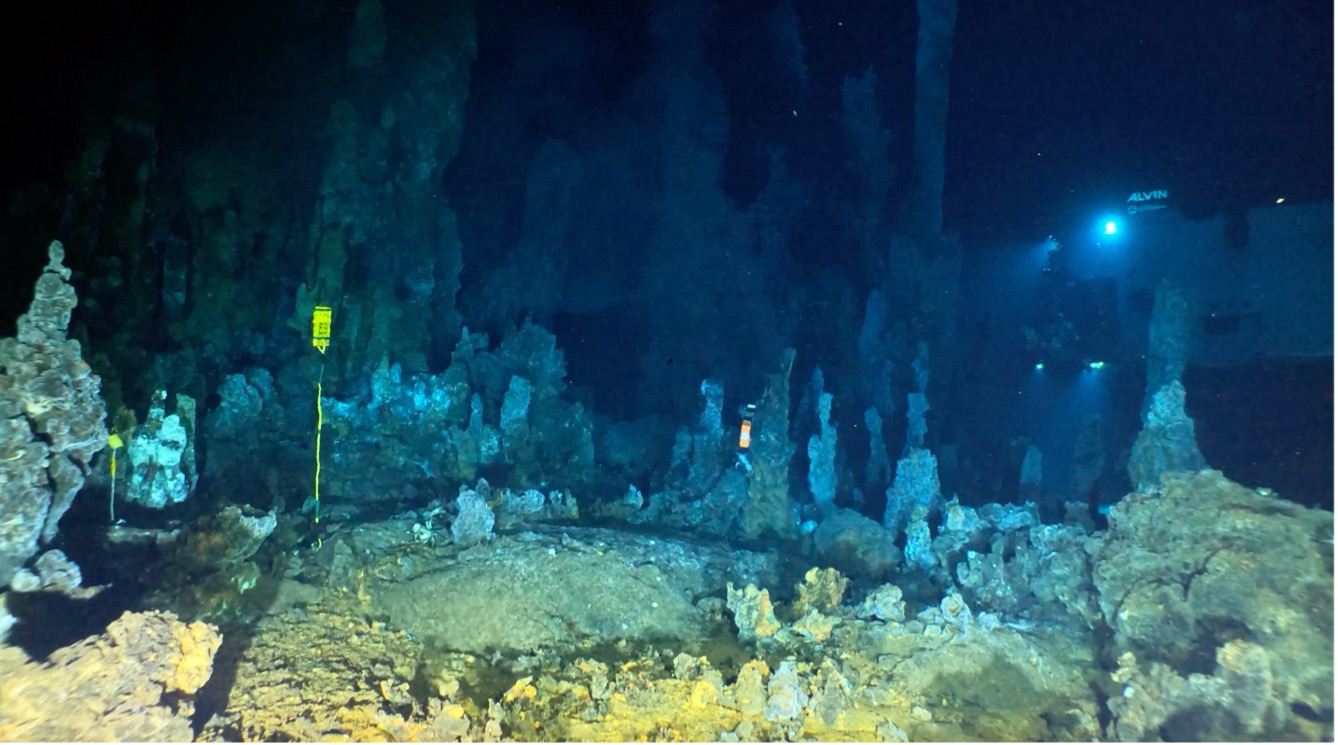
Frame-grab from a 5k video taken by a MISO GoPro camera mounted on a lander at the YBW-Sentry vent field 750 m east of the East Pacific Rise axis near 9° 54'N.
Photographs (A-F) taken with MISO GoPro cameras mounted on Alvin and a seafloor lander and details of various lander platform configurations for volcanic and hydrothermal research, as well as larval pumping (D)

